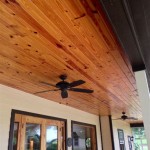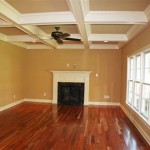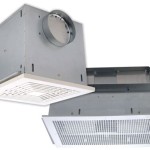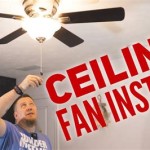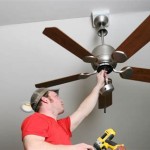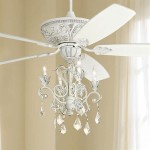Can You Install A Ceiling Fan On A Slanted Ceiling? A Comprehensive Guide
Installing a ceiling fan can enhance a room's comfort and aesthetic appeal. However, homes often present architectural challenges, such as slanted or vaulted ceilings. The question frequently arises: can a ceiling fan be installed on a slanted ceiling? The answer is a resounding yes, but it requires specific considerations and careful planning to ensure a safe and functional installation.
The key to successfully installing a ceiling fan on a slanted ceiling lies in understanding the unique constraints and selecting the appropriate hardware and techniques. Standard mounting hardware designed for flat ceilings is inadequate for slanted applications. Utilizing specifically designed mounting kits and angled downrods is crucial for achieving a secure and properly functioning fan.
Understanding Ceiling Slope and Necessary Hardware
The degree of the ceiling slope is the most critical factor in determining the necessary hardware. Ceiling slopes are typically expressed as a ratio, such as 4/12 or 8/12, which represents the vertical rise for every 12 inches of horizontal run. Alternatively, the slope can be expressed as an angle in degrees. The steeper the slope, the more specialized the mounting hardware needs to be. A shallow slope may only require an angled downrod, while a steeper slope may necessitate a specialized mounting bracket or a combination of both.
A crucial piece of hardware for slanted ceiling fan installation is the angled downrod. A standard downrod extends vertically from the motor housing of the fan, while an angled downrod incorporates a ball-and-socket joint, allowing the fan to hang plumb even when attached to a slanted ceiling. The angle of the downrod must match or exceed the angle of the ceiling slope. It is important to note that longer downrods may be required to provide adequate clearance between the fan blades and the ceiling, preventing airflow obstruction and potential damage.
In addition to the angled downrod, a specialized mounting bracket, often referred to as a "sloped ceiling adapter" or "vaulted ceiling adapter," may be required, particularly for steeper slopes. These brackets are designed to provide a secure and level mounting surface for the fan's mounting plate. They typically feature adjustments that allow for precise alignment, ensuring the fan hangs straight and operates smoothly. Furthermore, these brackets often incorporate vibration-dampening features, minimizing noise and potential stress on the ceiling structure.
Before purchasing any hardware, it is imperative to accurately measure the ceiling slope. A simple protractor or angle finder can be used to determine the angle in degrees. Accurate measurement ensures the selection of properly sized angled downrods and mounting brackets. Incorrect measurements can lead to an unstable and unsafe installation.
Assessing Structural Support and Electrical Wiring
Before commencing any installation, it is essential to assess the structural integrity of the ceiling and the existing electrical wiring. A ceiling fan is a relatively heavy appliance, and it requires substantial structural support to prevent sagging or, in extreme cases, collapse. The fan mounting bracket must be securely attached to a ceiling joist or a properly reinforced ceiling brace. Attempting to mount a fan directly to drywall is highly unsafe and will likely result in failure.
Determining the location of ceiling joists can be achieved using a stud finder. Once located, the joist must be verified as sufficiently strong to support the weight of the fan. Older homes may have undersized joists or signs of rot or damage, which may require reinforcement before installing a fan. In situations where reinforcement is necessary, consider consulting a qualified contractor to ensure the structural integrity of the ceiling.
Equally important is the assessment of the electrical wiring. The wiring must be rated to handle the electrical load of the ceiling fan. Typically, a standard 14/2 or 12/2 non-metallic cable is sufficient, but it is crucial to verify the existing wiring's capacity and condition. Inspect the wiring for any signs of damage, such as frayed insulation or loose connections. If the wiring appears inadequate or damaged, it should be replaced by a qualified electrician.
Furthermore, the electrical box to which the fan is connected must be specifically rated for ceiling fan installation. Standard electrical boxes are typically not designed to support the weight and vibration of a ceiling fan. Fan-rated electrical boxes are reinforced and designed to withstand the substantial stresses associated with fan operation. Replacing a standard electrical box with a fan-rated box is a relatively straightforward process, but it is essential to follow proper electrical safety procedures.
Proper grounding is also critical for electrical safety. Ensure the fan is properly grounded to prevent electrical shock. Connecting the fan's ground wire to the grounding terminal in the electrical box will effectively ground the fan. If the electrical box is not grounded, it may be necessary to run a separate ground wire to a nearby grounded metal conduit or a grounding rod.
Installation Procedures and Safety Precautions
After selecting the appropriate hardware and verifying the structural and electrical integrity of the ceiling, the installation process can begin. Before starting, always disconnect the power to the circuit at the breaker box to prevent electrical shock. Double-check that the power is off using a non-contact voltage tester.
Begin by assembling the mounting bracket according to the manufacturer's instructions. Ensure all screws and fasteners are securely tightened. Attach the mounting bracket to the ceiling joist or reinforced ceiling brace using appropriate screws or lag bolts. The bracket should be flush with the ceiling surface and firmly secured.
Next, assemble the ceiling fan according to the manufacturer's instructions. This typically involves attaching the fan blades to the motor housing, connecting the wiring, and attaching the downrod. Ensure all wiring connections are secure and that the wires are properly tucked away within the fan's housing. When installing the downrod, make sure the ball-and-socket joint is properly aligned and lubricated to allow for smooth rotation.
Carefully lift the assembled fan and attach it to the mounting bracket. This may require assistance from another person, especially for larger and heavier fans. Ensure the fan is securely seated in the mounting bracket and that all locking mechanisms are engaged. Double-check that the fan is hanging plumb and that there is adequate clearance between the fan blades and the ceiling.
Finally, restore power to the circuit at the breaker box and test the fan's operation. Verify that the fan starts smoothly, that the speed settings are functioning correctly, and that there are no unusual noises or vibrations. If any issues are observed, immediately disconnect the power and troubleshoot the problem. Common issues include loose wiring connections, improperly balanced fan blades, or inadequate mounting bracket support.
Throughout the installation process, it is imperative to adhere to all safety precautions. Wear appropriate personal protective equipment, such as safety glasses and gloves. Use a sturdy ladder or scaffolding to reach the ceiling. Avoid working alone, and always have someone nearby who can assist in case of an emergency. If at any point you feel uncomfortable or unsure about any aspect of the installation, consult a qualified electrician or contractor.
Installing a ceiling fan on a slanted ceiling is a manageable task with the appropriate knowledge, tools, and precautions. By understanding the unique challenges presented by slanted ceilings, selecting the correct hardware, and adhering to proper installation procedures, a ceiling fan can be effectively installed to enhance the comfort and aesthetic appeal of any room.

How To Install A Ceiling Fan On Sloped Lemon Thistle

How To Install A Ceiling Fan On Sloped Lemon Thistle

How To Choose A Ceiling Fan For Vaulted Ceilings Lightology

Fans On An Angle Installing Ceiling Angled Or Raked

How To Choose A Ceiling Fan For Vaulted Ceilings Lightology

Vaulted Sloped Ceiling Adapter For Modern Fan Company Fans Stardust

Ensuring Proper Ceiling Fan Installation With Vaulted Ceilings

Ceiling Fans For Angled Ceilings

How To Install A Fan On Steep Ceiling Faro Barcelona

Hunter Fans How To Install Your Ceiling Fan Cpo S
Related Posts

